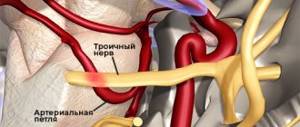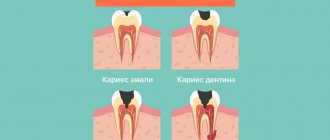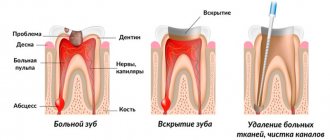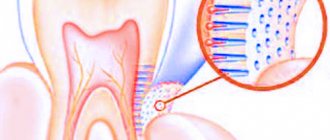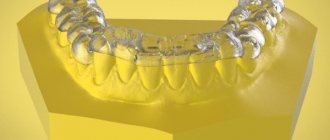At our Center, we can offer comprehensive treatment for trigeminal neuralgia in combination with radiofrequency ablation. This technique will save you from suffering for a long time. We will answer all your questions by phone. You can also ask a question by filling out the request form below.
Trigeminal neuralgia is a disorder caused by unilateral inflammation of one of the three existing branches of the nerve originating from the temporal part of the skull and ending in the forehead, cheek and lower jaw area.
Disruption of the nerve occurs as a result of its compression by a nearby vessel.
Experts strongly call this disease one of the most insidious. It causes a lot of discomfort to the patient.
If you do not identify the symptoms in a timely manner and do not begin proper treatment, you can develop many more serious problems.
Causes
In many cases, the cause of the disease remains unknown, but more often, after conducting a full medical examination, the doctor can determine the etiology of the disease. The main precursors of nerve inflammation are:
- damage to part of the face by a herpes viral infection;
- trauma that damages the trigeminal nerve;
- atherosclerosis, impaired blood circulation in the vessels of the brain;
- abnormal placement of blood vessels, leading to compression of the nerve;
- aneurysm;
- multiple sclerosis;
- formations in the brain (tumor (meningioma), scars);
4. Methodology and results
Percutaneous rhizotomy of the trigeminal nerve is an electrocoagulation effect on the nerve roots, resulting in disruption of its conductivity. Pain signals stop reaching the brain.
The operation is performed on the basis of high-precision stereotactic guidance. A special electrode in the form of a thin needle penetrates the cheek into the nerve, and electrocoagulation is performed.
This treatment technique is minimally invasive and effective, and the patient recovers quickly after it. Discharge from the hospital occurs the next day. The person completely gives up painkillers and regains ability to work and a high quality of life. The effectiveness of this type of treatment reaches 98%.
The only drawback
percutaneous rhizotomy is that many patients lose sensitivity in one part or another of the face, but compared to the pain experienced, this disorder does not seem significant, and the choice is made in favor of treatment.
Symptoms
Most often, the first attacks of pain begin in the jaw area. Pain may appear spontaneously or be provoked by external factors (laughter, chewing movements, articulation). The pain has a shooting character, similar to an electric shock.
To determine the diagnosis, the doctor first of all pays attention to the symptoms that appear, which often appear during sleep:
- one side of the face periodically twitches;
- pain that begins in the jaw area spreads to the cheek, nose, ear, frontal area, eye, throat and tonsils;
- the appearance of red spots on the face (usually on the right);
- copious nasal discharge;
- eyes often water.
Due to pain in the jaw, a person uses only the healthy side to chew food. A lump may form in the muscle on the affected side.
To make an accurate diagnosis and exclude other possible diseases, it is necessary to examine the ENT organs and the oral cavity. An MRI and CT scan should be performed to rule out cluster headache, atypical neuralgia, myofacial pain, jaw pain, and temporal pain.
Leading neurologists and neurosurgeons at Top Ichilov guarantee quick relief from pain
Within the walls of Israel's leading medical center, Top Ichilov, highly qualified specialists with extensive experience in the treatment of neuralgia successfully work. The possibility of using such experience in symbiosis with the best diagnostic and therapeutic equipment, modern protocols for treating neurological diseases leads to tangible results and will allow patients to quickly return to a full, healthy life.
- Radiofrequency ablation – safely and effectively fights prostate cancer
- Reconstruction of peripheral nerves: treatment in Israel
Treatment
Basically, trigeminal neuralgia is eliminated using conservative treatment methods. The main anticonvulsant drug used, Carbamazepine, is prescribed only by a doctor. The patient must be monitored throughout the entire treatment period. At the same time, the doctor may prescribe antispasmodics, painkillers and anti-inflammatory drugs. If the pain does not go away after taking an anticonvulsant drug for two days, doctors consider it appropriate to reconsider the diagnosis.
Along with medications, physiotherapeutic treatment is used. Pulsed currents with low frequency, ultrasound with ultraviolet and infrared radiation, laser puncture, acupuncture, electrophoresis, and acupressure are used.
If tumors or vascular changes are detected, surgical decompression is prescribed. During surgery, the affected nerve branch is blocked, and a gasket is placed between the nerve root and the vessel compressing it.
A less painful surgical method is radiofrequency root ablation, performed through the skin. The operation is performed under local anesthesia, and the body recovers in a short time.
Conservative and surgical (superselective radiofrequency thermocorrection of the sensitive portion of the Gasserian ganglion) treatment of inflammation of the trigeminal nerve.
Prevention and treatment of trigeminal neuralgia
Treatment can be divided into conservative and surgical. The medical community has not developed a unified approach to drug therapy for trigeminal neuralgia. Treatment is varied - anticonvulsants are prescribed to prevent the development of an attack of pain (carbamazepine, finlepsin, tegretol), vascular drugs, antispasmodics, sedatives. The dose is selected individually. When a therapeutic effect is achieved (cessation of painful attacks), the dose is reduced to the minimum at which the effect is maintained and this dose is used for a long time (maintenance therapy). Possible addiction and, as a result, an increase in dose. It is possible to prescribe oxcarbazepine, synthesized on the basis of carbamazepine and less likely to cause side effects. The use of baclofen and lamotrigine is acceptable. Uncontrolled studies have shown the effectiveness of phenytoin, gabapentin, clonazepam and sodium valproate preparations.
Physiotherapeutic techniques are also used during treatment to enhance the effect of conservative drug treatment. Physiotherapy can be used after surgery at the rehabilitation stage. If there is no effect within 12 months, they resort to neurosurgical intervention.
A surgical operation allows not only to eliminate pain, but also to eliminate the impulse chain, to influence the conflict between the root of the cranial nerve emerging from the brain stem and the vessel that adjoins it. Microvascular decompression of the trigeminal nerve root is considered the most effective and safe (with preservation of the nerve). The operation involves installing a gasket (protector) between the nerve and the vessel. Microvascular decompression of the trigeminal nerve root is a transcranial endoscopic intervention and is performed through a mini-access (in fact, we are talking about a cosmetic incision of no more than 2.5x2 cm, minimal blood loss, and no long-term rehabilitation is required).
Mechanical destruction of peripheral branches, glycerin rhizotomy, laser thermocoagulation, and radiofrequency destruction can also be used, but the use of these surgical methods sometimes does not preserve the integrity of the nerve. Indications for each of the listed treatment methods depend on the duration of the disease, the age of the patient, and the presence of concomitant diseases. The success of surgical treatment depends on clear diagnosis, careful selection of patients and strict adherence to surgical technologies.
There is no specific prevention for this disease. Doctors only recommend eliminating as much as possible the impact on the body of those risk factors that can lead to nerve inflammation, including avoiding hypothermia of the face. It is also recommended to promptly treat underlying diseases that are risk factors for the development of neuralgia, including diseases of the oral cavity, ENT organs, etc.
Radiofrequency ablation
Minimally invasive surgery
The principle of radiofrequency deinervation is based on the physical method of thermocoagulation and is based on the effect of the release of thermal energy when ultra-high frequency currents pass through biological tissues.
An electrode connected to a current generator is brought to the anatomical area, the site of destruction, through an insulated cannula needle. The intensity of heating of the fabric depends on its resistance. A STRYKER Multigen radio frequency generator is used, which provides voltage to the circuit and is connected by wires between two electrodes. Electric current passes between an active or damaging electrode immersed in body tissue and an indifferent or scattered electrode. Heat production, and as a result, nerve ablation, occurs only around the non-insulated tip of the active electrode.
Methods for performing rhizotomy
In addition to radiofrequency rhizotomy, there are other ways to perform this procedure. The destruction of the spine can be carried out:
- balloon catheter - balloon rhizotomy;
- injection of a chemical agent - chemical rhizotomy;
The CELT Pain Clinic uses radiofrequency rhizotomy because it is the most gentle for the patient and has the least complications.
Radiofrequency rhizotomy - RUB 35,000.
15-30 minutes
(duration of procedure)
2 hours in hospital
Technique
Radiofrequency deinervation is carried out with insulated needles 100 mm long with a working bare end at a 5 mm cut. Under visual control, the tip of the needle is placed into the foramen ovale through the 3rd division of the trigeminal nerve into the Gasserian ganglion.
After installing the needle, low current stimulation is carried out at a frequency of 100 Hz for sensory fibers and 2 Hz for motor fibers, while a tingling sensation at less than 0.5 V indicates the optimal approach of the needle to the affected nerve. The nerve is stimulated with current and the desired branch of the trigeminal nerve is searched. After identifying the branch, the ablation procedure is carried out - the tip of the needle is heated to 70 C for 90 seconds or in pulsed radiofrequency ablation mode 42 ° C for 120 seconds. Low temperature conditions do not cause burns. This leads to healing of the inflamed nerve.
Symptoms of trigeminal neuralgia
Pain is noted in the area of innervation of one or more sensory branches of the trigeminal nerve, most often the maxillary. The pain is paroxysmal, lasting from a few seconds to 2 minutes, but attacks can quickly recur. The pain is shooting, excruciating, often disabling, and is often triggered by touching trigger points on the face or movements (for example, chewing, brushing teeth, or smiling). Often the patient cannot sleep on the affected side of the face; on average, the attack lasts up to 3 minutes; in about 7% of patients it lasts up to 3 days. Their number can reach 200 per day.
Over time, the pain progresses and may be constant, without intervals. The effectiveness of medications that relieve pain decreases and the patient can no longer control the pain. It becomes exhausting for him. Patients may withdraw from social contacts and daily activities for fear of pain returning.
Pain from trigeminal neuralgia can be observed in different parts of the face. It all depends on which branch of the nerve was affected, if the maxillary - in the area of the facial muscles, upper jaw and nose, the mandibular - the pain will resemble a toothache, the ocular - in the area of the temples, forehead and above the eyebrows. Other characteristic symptoms of inflammation of the trigeminal nerve: spasms of the facial muscles; increased salivation; increased or decreased sensitivity of facial skin; moderate increase in temperature; weakness and muscle pain.

